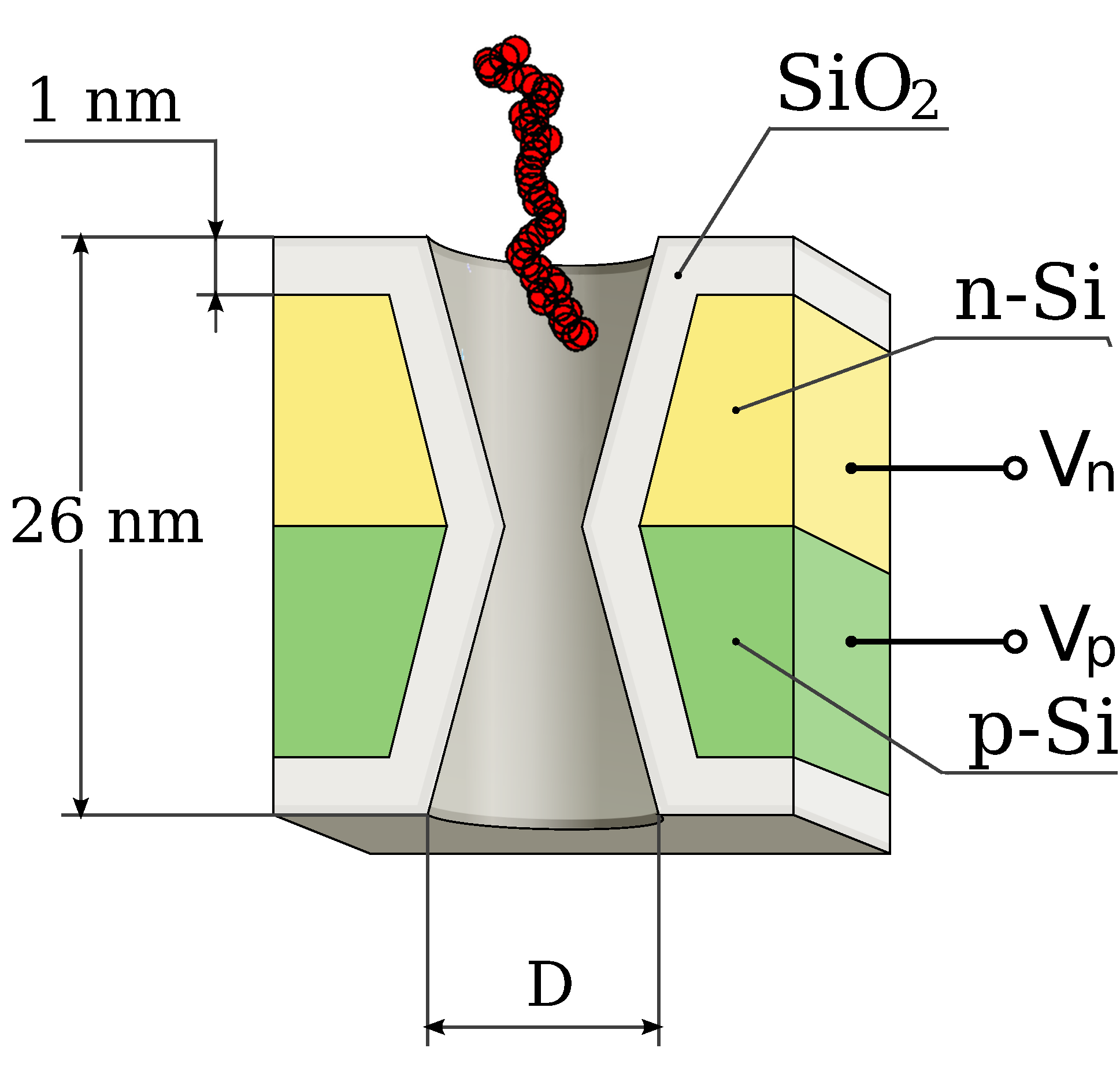Brownian Dynamics of DNA
DNA translocation through nanopore in a semiconductor membrane


Numerical simulations can provide us with invaluable insight into the microscopic behavior of molecules as they translocate through artificial nanopores. With this in mind, we have developed a computational tool-box that allows us to examine how polymer dynamics will be affected by the electrostatic fields of semiconductor membranes submerged in electrolytic solution.
To simulate the electrostatic potential and the charge carrier concentrations in the solid-state membrane and the electrolyte, we have employed the electrostatic approach which is based on the self-consistent solution of Poisson equation within the semiclassical approximation for charge carrier statistics in the membrane and electrolyte.
The electrostatic potentials obtained from these simulations are then used in conjunction with Langevin (Brownian) dynamics to model polymer translocation through the nanopore. Charged biopolymers, such as DNA, thus experience the effects of the membrane electric field dynamically. In order to enhance this interaction, we need semiconductor membranes that can create strong electric fields. One possible design is a membrane with heavily doped p- and n-layers of silicon that form a p-n junction. In these devices, the electric field in a nanopore biased with proper potentials will control dynamics of a biomolecule inside the channel, in order to either momentarily trap the polymer, slow it down, or allow it to translocate at will.
Related papers
- "Polymer Translocation Through an Electrically Tunable Nanopore in a Multilayered Semiconductor Membrane", Dmitriy V. Melnikov, Alexey Nikolaev, Jean-Pierre Leburton, and Maria E. Gracheva, Chapter in "Nanopore-based technology: single molecule characterization and DNA sequencing", edited by M. E. Gracheva (Humana Press, 2011).